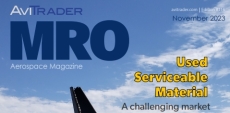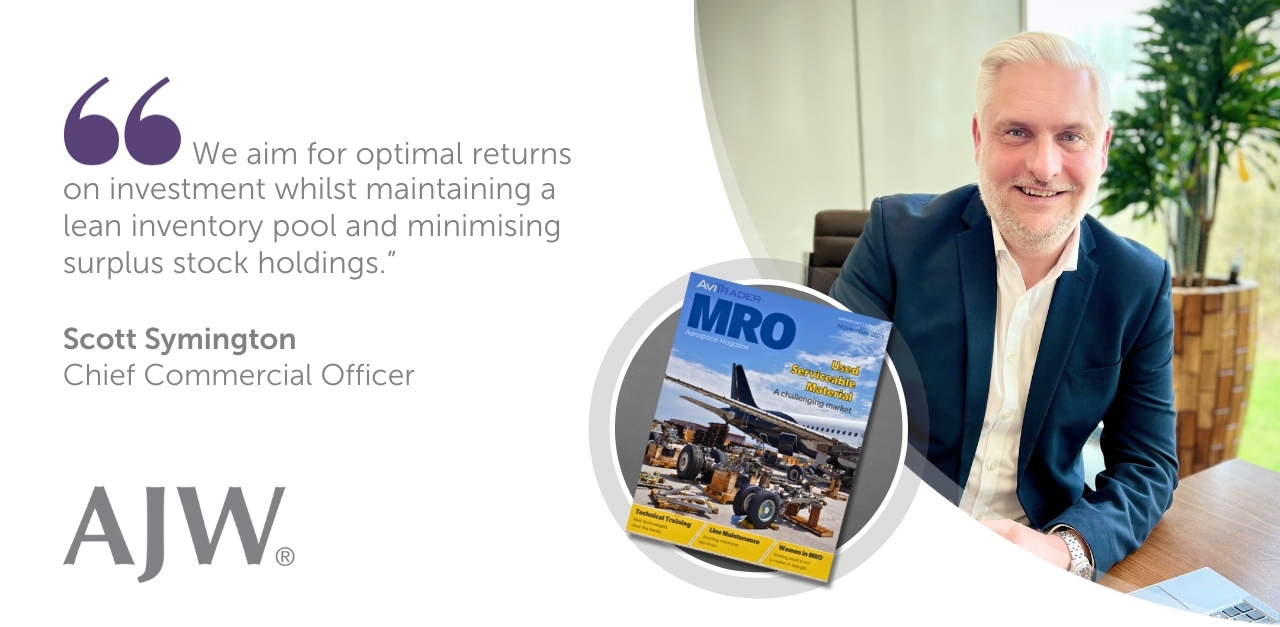

24/7 AOG Critical Response
Hotline![]() UK +44 1403 798888US +1 877 780 2008
UK +44 1403 798888US +1 877 780 2008
Our award winning global AOG service is manned 24 hours a day, 365 days a year.
Please call +44 1403 798888 or email aog@ajw-group.com.

29 Nov 2023

While supply and demand are the two factors driving pricing, continued delays in new aircraft delivery are not helping industry recovery and are having an impact on the tear-down and USM market. But how are these delays and the persistent supply chain issues contributing to the ongoing challenges facing the industry?
AviTrader MRO’s David Dundas speaks to AJW Chief Commercial Officer, Scott Symington about the challenges of the Used Serviceable Material (USM) market in the November issue of the magazine.
Symington affirms that delays in new-generation platforms such as the NEO and the MAX, combined with the high demand post-covid era, have led to fewer aircraft being retired. He says operators are holding on to aircraft longer than before or are using ageing fleets for additional capacity. As a result, there is less inventory available to part out and subsequently, we’re seeing substantially increased demand for USM for older aircraft.
Fleets remaining in operation far longer than usual still need to have their maintenance checks done, and this is not something the industry has seen before but has positive implications for companies offering servicing and MRO services. He warns, however, that this increase in USM demand is significantly out of balance with the available supply.
Symington sees challenges regarding inventory management and procurement and offers insight into effective methods of inventory and procurement management. He says, “The challenge comes in striking the balance between styles of procurement, aiming for optimal returns on investment whilst maintaining a lean inventory pool and minimising surplus stock holdings.”
Whilst the general agreement is that supply and demand are driving sales, AJW's Chief Commercial Officer states that “When demand for specific aircraft materials or components is high and the supply is limited, prices tend to surge. Conversely, in times of demand and ample supply, prices may decline.” He continues discussing how the intrinsic value of parts and components add to their value and says, “Logistics expenses tied to material transportation, market fluctuations, regulatory compliance costs, and the ongoing expenses of ownership, including storage and insurance, all exert an influence on pricing.”

Moving on to discuss aircraft viability for teardown, Symington considers the age of an aircraft to be a significant factor. Older aircraft can become less cost-effective to operate and maintain, prompting retirement but making them attractive candidates for teardown. Well maintained aircraft that are structurally sound are more desirable for teardown because their components are likely to be in better condition and have higher market value. The aviation industry continually requires spare parts to support its fleet, and the demand for specific components can influence the selection of an aircraft.
The Group CCO offers the reader considerable insight into the complexity of the teardown process and the many factors that must be considered at every stage.
Dundas summarises saying that although supply and demand for USM are key, it is the availability of aircraft for teardown that is the primary focus to meet demand. The slow delivery of new aircraft into the market is keeping older aircraft in operation for longer and this is impacting part and component availability.